Do you have a question about the MSI MEG X399 CREATION and is the answer not in the manual?
Lists essential tools and components for PC assembly.
Detailed instructions and video guide for safely installing the CPU.
Instructions and diagrams for properly installing RAM modules.
Guide for connecting front panel case connectors to the motherboard header.
Steps for mounting the motherboard inside the computer case.
Procedures for installing SATA DVD and hard disk drives.
Guide for inserting and securing the graphics card into the PCIe slot.
Diagrams showing how to connect external peripherals like keyboard, mouse, and monitor.
Illustrates how to connect ATX, CPU, and PCIe power supply cables.
Final steps to power on the assembled computer system.
Details supported CPU types, chipset, and DDR4 memory specifications.
Information on USB ports, audio codec, and rear panel connectors.
Explains internal connectors, jumpers, and debug LED functions.
Details I/O controller, form factor, BIOS features, and software support.
Highlights unique or advanced features of the motherboard.
Lists all items included in the motherboard retail package.
Diagram and explanation of rear panel ports, buttons, and LED status.
Step-by-step guide for attaching the Wi-Fi antennas.
How to use the Realtek Audio Console for sound settings and enhancements.
Visual guides for connecting various audio devices to the motherboard.
Diagram showing the location of key motherboard connectors and headers.
Detailed instructions and video guide for safely installing the CPU.
Explains how to use the GAME BOOST knob for overclocking the CPU.
Describes the function of OC Retry and OC Force Enter BIOS jumpers.
Details on Slow Mode Booting jumper and DIMM slot installation.
Guides for installing memory modules for different CPU and configurations.
Details on PCIe slots and recommendations for multiple graphics cards.
Steps for installing and configuring multiple graphics cards for SLI.
Information on M.2 slots, heatsinks, and device installation.
Procedures for installing M.2 SSDs into the slots.
Guide for installing the M.2 XPANDER-AERO expansion card.
Details on SATA connectors and front panel header pin assignments.
Information on connecting ATX power supply connectors to the motherboard.
Details on connecting USB 2.0 and USB 3.1 Gen1 headers to the front panel.
Information on the USB charger port and USB 3.1 Gen2 Type-C connector.
Explains fan connectors (PWM/DC) and thermal sensor connections.
Describes chassis intrusion detection and TPM module connectors.
Details on front audio header and Clear CMOS jumper for resetting BIOS.
Explains power/reset buttons and base clock adjustment connectors.
Guide for connecting RGB LED strips (12V and 5V addressable).
Instructions for connecting CORSAIR RGB fans and LED strips.
Explains EZ Debug, DIMM, and Fan LEDs for system status.
Details the Debug Code LED display and boot phase codes.
Explains the meaning of ACPI state codes displayed during system operation.
How to access the BIOS and reset its settings.
Procedures for updating BIOS via M-FLASH, Live Update, and BIOS FLASHBACK+.
Overview of the BIOS EZ and Advanced modes for configuration.
Explanation of the Advanced Mode interface and menu selections.
Configuration of system date, time, SATA ports, and system information.
Configuration for PCIe lanes, ACPI, integrated peripherals, and OS settings.
Settings for SATA mode, USB configuration, and power management behaviors.
Settings related to Windows OS, secure boot, and system wake-up events.
Configuration of boot order, secure erase, and password protection.
Options for overclocking CPU, memory, and system performance tuning.
Steps for installing the operating system, drivers, and system utilities.
Guide to managing and updating MSI applications and software.
Instructions for using Live Update 6 to download drivers and BIOS.
Explanation of Command Center for system tuning, monitoring, and fan control.
How to use Gaming App for performance optimization, hotkeys, and remote control.
Guide to controlling motherboard and component RGB lighting effects.
Utility for creating Windows installation USB drives and Super RAID.
Using RAMDISK to create a fast virtual RAM drive.
Software for managing network bandwidth and optimizing online gaming.
Features of Nahimic 3 for audio effects, microphone settings, and sound tracking.
Solutions for common power-on and no-signal-to-monitor problems.
Troubleshooting steps for boot failures, network connectivity, and USB device problems.
Lists essential tools and components for PC assembly.
Detailed instructions and video guide for safely installing the CPU.
Instructions and diagrams for properly installing RAM modules.
Guide for connecting front panel case connectors to the motherboard header.
Steps for mounting the motherboard inside the computer case.
Procedures for installing SATA DVD and hard disk drives.
Guide for inserting and securing the graphics card into the PCIe slot.
Diagrams showing how to connect external peripherals like keyboard, mouse, and monitor.
Illustrates how to connect ATX, CPU, and PCIe power supply cables.
Final steps to power on the assembled computer system.
Details supported CPU types, chipset, and DDR4 memory specifications.
Information on USB ports, audio codec, and rear panel connectors.
Explains internal connectors, jumpers, and debug LED functions.
Details I/O controller, form factor, BIOS features, and software support.
Highlights unique or advanced features of the motherboard.
Lists all items included in the motherboard retail package.
Diagram and explanation of rear panel ports, buttons, and LED status.
Step-by-step guide for attaching the Wi-Fi antennas.
How to use the Realtek Audio Console for sound settings and enhancements.
Visual guides for connecting various audio devices to the motherboard.
Diagram showing the location of key motherboard connectors and headers.
Detailed instructions and video guide for safely installing the CPU.
Explains how to use the GAME BOOST knob for overclocking the CPU.
Describes the function of OC Retry and OC Force Enter BIOS jumpers.
Details on Slow Mode Booting jumper and DIMM slot installation.
Guides for installing memory modules for different CPU and configurations.
Details on PCIe slots and recommendations for multiple graphics cards.
Steps for installing and configuring multiple graphics cards for SLI.
Information on M.2 slots, heatsinks, and device installation.
Procedures for installing M.2 SSDs into the slots.
Guide for installing the M.2 XPANDER-AERO expansion card.
Details on SATA connectors and front panel header pin assignments.
Information on connecting ATX power supply connectors to the motherboard.
Details on connecting USB 2.0 and USB 3.1 Gen1 headers to the front panel.
Information on the USB charger port and USB 3.1 Gen2 Type-C connector.
Explains fan connectors (PWM/DC) and thermal sensor connections.
Describes chassis intrusion detection and TPM module connectors.
Details on front audio header and Clear CMOS jumper for resetting BIOS.
Explains power/reset buttons and base clock adjustment connectors.
Guide for connecting RGB LED strips (12V and 5V addressable).
Instructions for connecting CORSAIR RGB fans and LED strips.
Explains EZ Debug, DIMM, and Fan LEDs for system status.
Details the Debug Code LED display and boot phase codes.
Explains the meaning of ACPI state codes displayed during system operation.
How to access the BIOS and reset its settings.
Procedures for updating BIOS via M-FLASH, Live Update, and BIOS FLASHBACK+.
Overview of the BIOS EZ and Advanced modes for configuration.
Explanation of the Advanced Mode interface and menu selections.
Configuration of system date, time, SATA ports, and system information.
Configuration for PCIe lanes, ACPI, integrated peripherals, and OS settings.
Settings for SATA mode, USB configuration, and power management behaviors.
Settings related to Windows OS, secure boot, and system wake-up events.
Configuration of boot order, secure erase, and password protection.
Options for overclocking CPU, memory, and system performance tuning.
Steps for installing the operating system, drivers, and system utilities.
Guide to managing and updating MSI applications and software.
Instructions for using Live Update 6 to download drivers and BIOS.
Explanation of Command Center for system tuning, monitoring, and fan control.
How to use Gaming App for performance optimization, hotkeys, and remote control.
Guide to controlling motherboard and component RGB lighting effects.
Utility for creating Windows installation USB drives and Super RAID.
Using RAMDISK to create a fast virtual RAM drive.
Software for managing network bandwidth and optimizing online gaming.
Features of Nahimic 3 for audio effects, microphone settings, and sound tracking.
Solutions for common power-on and no-signal-to-monitor problems.
Troubleshooting steps for boot failures, network connectivity, and USB device problems.
| Chipset | AMD X399 |
|---|---|
| Form Factor | E-ATX |
| Max Memory Capacity | 128 GB |
| PCIe 3.0 x16 Slots | 4 |
| PCIe x1 Slots | 1 |
| SATA 6Gb/s Ports | 8 |
| M.2 Slots | 3 |
| U.2 Ports | 1 |
| USB 3.1 Gen1 (Front) | 4 |
| USB 2.0 (Rear) | 2 |
| USB 2.0 (Front) | 2 |
| Audio | Realtek ALC1220 |
| RAID Support | 0, 1, 10 |
| Socket | TR4 |
| Memory Slots | 8 |
| USB 3.1 Gen2 (Front) | 1 |
| Networking | Intel I211AT Gigabit LAN |
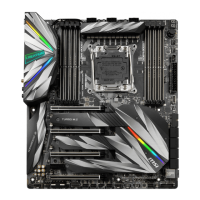
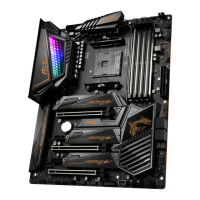
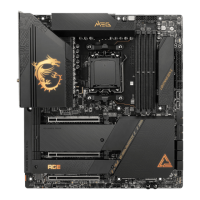
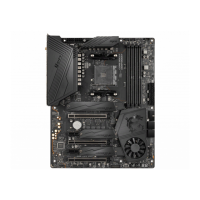

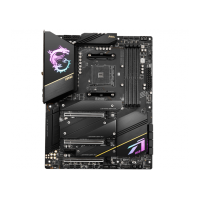
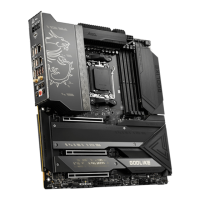
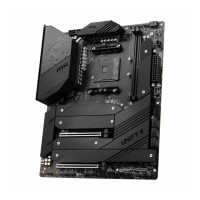

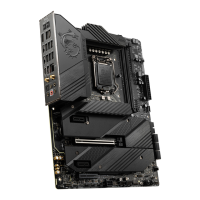


